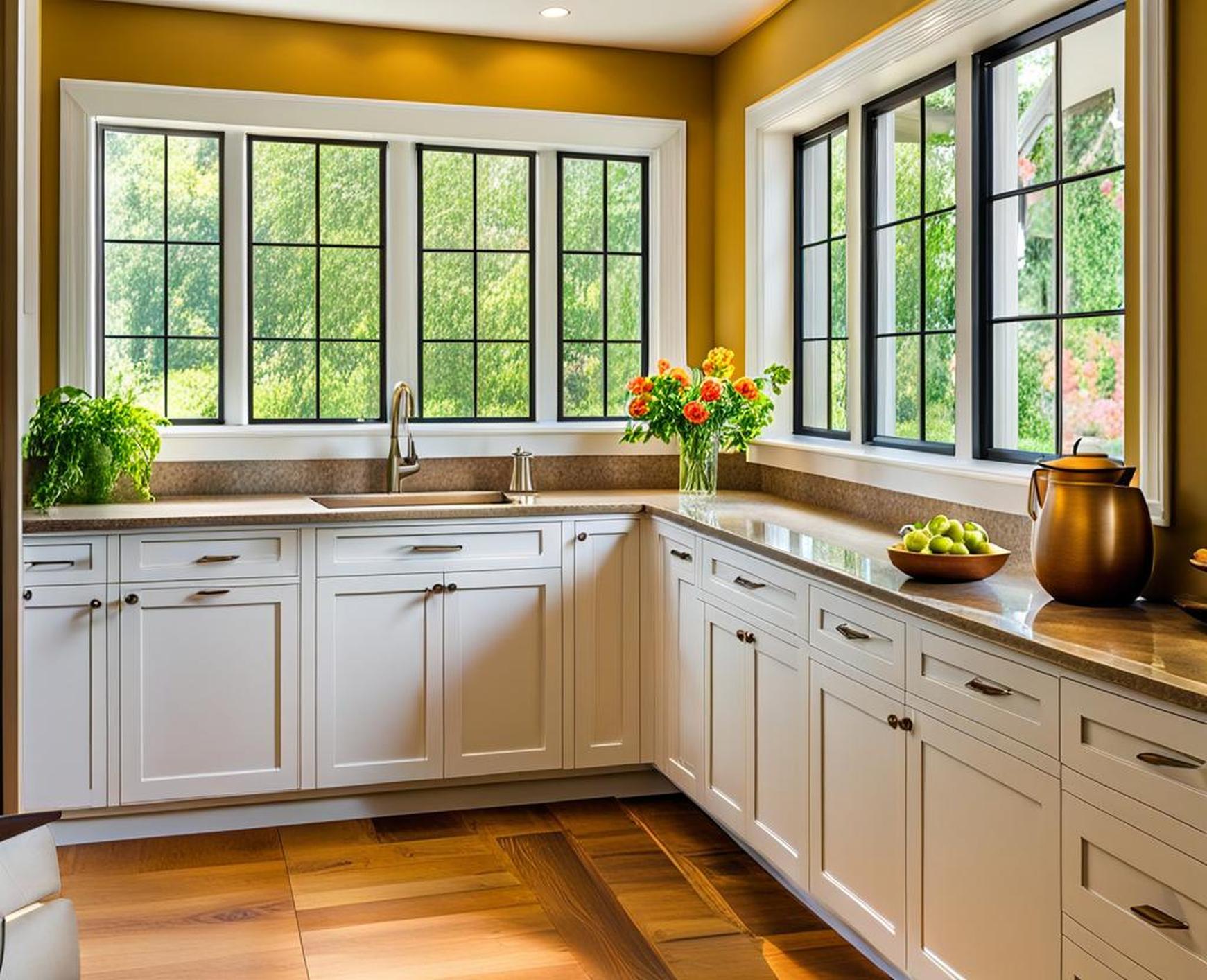When remodeling or building a new kitchen, selecting the perfect windows is an important decision. Not all windows are created equal – with different operating mechanisms, sizes, materials and more to consider. The right kitchen windows can maximize natural light, ventilation, aesthetics and functionality.
Different Kitchen Window Types
From classic double hungs, to modern garden windows, there are several window styles commonly used in today’s kitchens:
Sliding Windows
Sliding windows feature panels that glide horizontally past each other to open. This style is easy to operate and doesn’t consume much interior space. However, sliding windows offer more limited ventilation capabilities compared to other options.
Double Hung Windows
Double hung windows have an upper and lower sash that slide up and down vertically in separate channels. This dual functionality allows airflow from both the top and bottom. However, they usually require more effort to open than sliding windows.
Casement Windows
Casement windows are attached at the side by hinges allowing them to crank open outward. This style provides excellent ventilation. Casement windows can also withstand weather and high air pressure. Drawbacks include a higher cost and larger interior footprint when open.
Garden Windows
Garden windows feature a box-like shape that projects outward from the wall with glass panes on all sides. They provide ample space for displaying plants, collectibles and more. While they allow plentiful natural light, garden windows have limited ventilation capabilities as the central glass pane usually doesn’t open.

Picture Windows
As their name suggests, picture windows provide an unobstructed outdoor view. They are essentially extra large fixed panes that don’t open. Although lacking ventilation, picture windows perfectly showcase and “frame” lovely scenery. They also flood rooms with sunlight.
| Skylight Windows | Installed on ceilings, skylights add natural overhead light. Great for interior, second story or limited wall space kitchens. |
| Transom Windows | Transom windows installed over doors/windows maximize light and ventilation. Stylish design detail. |
| Hopper Windows | Similar to awnings, hoppers are hinged at the bottom to open upward. Good for smaller kitchen spaces. |
Key Factors To Consider
When selecting new kitchen windows, below are some of the most important considerations:
- Desired Amount of Natural Light: Assess your lighting needs. Some windows, like pictures and gardens, provide more light.
- Required Ventilation: Evaluate if you need windows that open for airflow, or only desire natural light.
- Available Space: Measure window openings to ensure the style fits your kitchen’s parameters.
- Budget: Costs range widely based on material, operating style, size and custom options selected.
- Aesthetic Preferences: Choose windows that match your target decor style from classic to contemporary.
- Ease of Use: Operation mechanisms vary in effort required. Important if mobility impaired.
- Outdoor Views: Select larger picture styles if wanting to highlight pretty scenery.
Evaluate Your Needs
Make a list of your ideal specifications for optimal results:
- Natural Light Needs: Abundant, moderate or limited
- Ventilation: Frequent, moderate, minimal or unnecessary
- Functionality: Easy to reach/operate or not required
- Decor Goals: Enhance views or display collectibles
- Room Dimensions: Accommodate potential interior window projection
Selecting the Right Kitchen Windows
Choosing the perfect kitchen windows involves careful evaluation of styles against your space, functionality and aesthetic requirements. Thorough measurements of existing openings are also key. Consulting reputable window showrooms and installers can further inform your buying decision. With research and clarity on ideal specifications, you’re sure to find windows to suit your unique style and needs.
Kitchen windows deserve special consideration given how much time we spend cooking, dining and entertaining in this busy room. As we’ve covered, window types range vastly in sightlines offered, ventilation provided, ease-of-use, costs and overall looks. Carefully weighing your lighting desires, view wishes, ventilation needs and decor goals will ensure confident selection.
This overview of popular kitchen window styles, complete with pros and cons, gives you a solid starting point for evaluation. Keep this comprehensive guide handy as you start the exciting process of choosing perfect frames for your culinary views!
